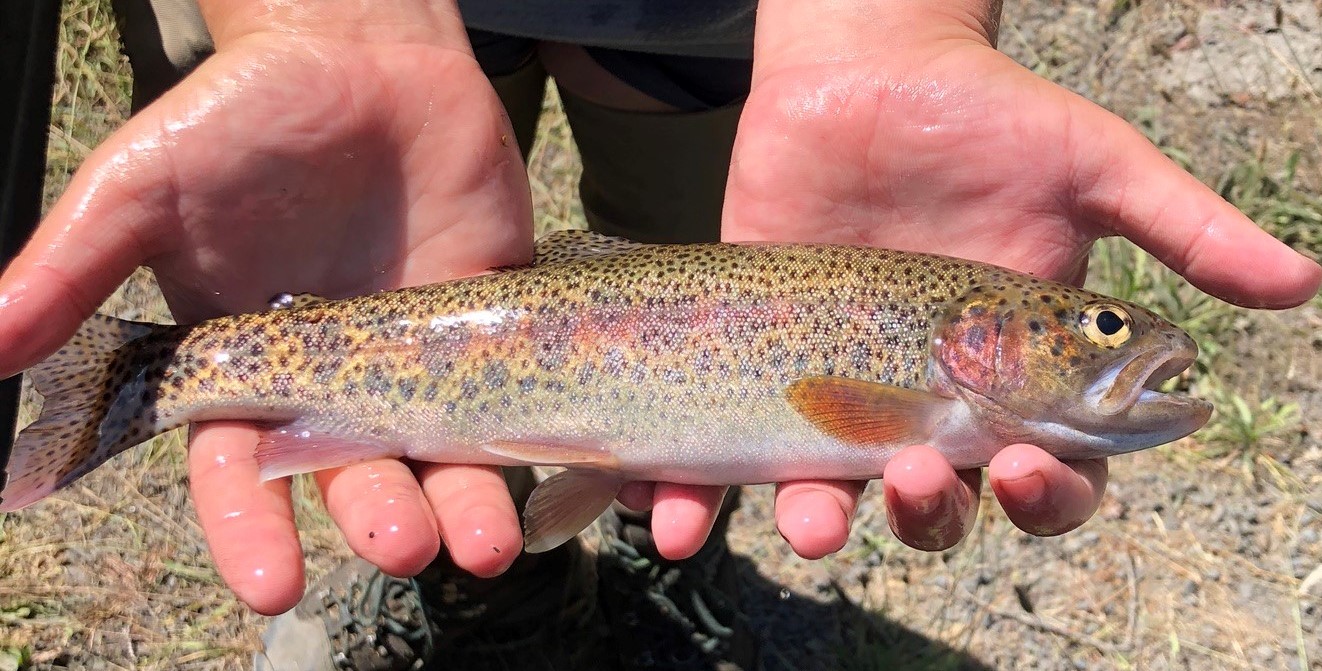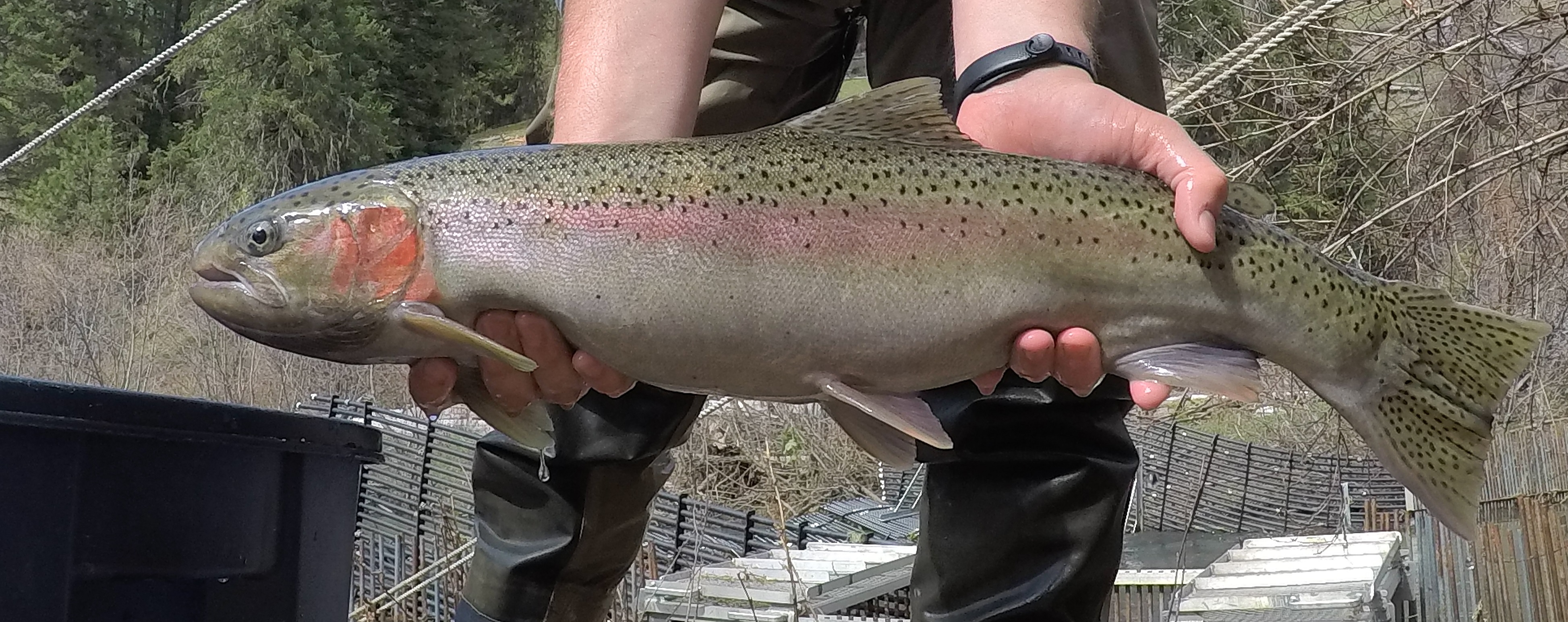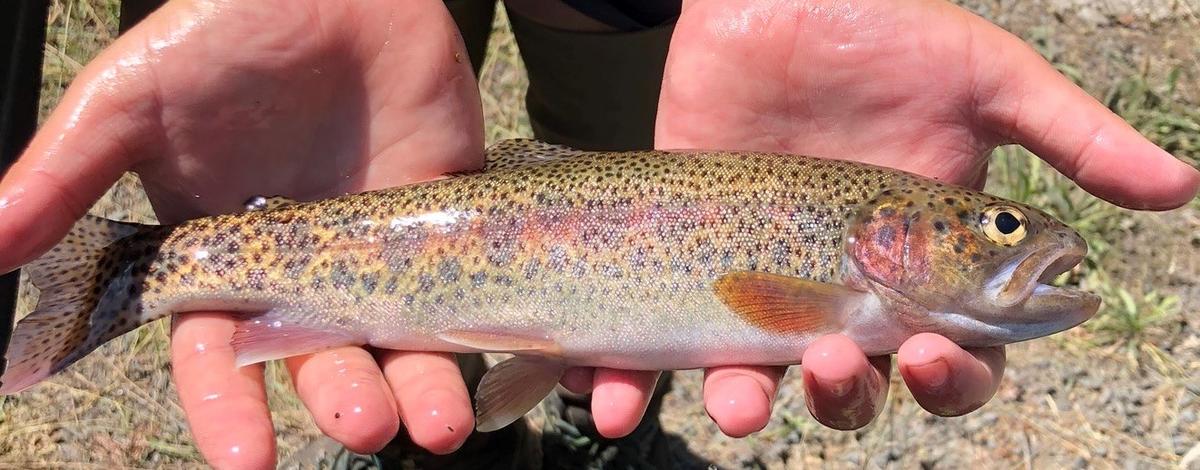We often get questions from the public asking what's the difference between a rainbow trout and a steelhead. It's understandable that people would ask this given the literally BIG difference between small sized rainbow trout and large steelhead. The cool thing is that there are differences between them, but also, they are the same thing. Rainbow trout and steelhead are actually different life history forms of the same species, Oncorhynchus mykiss.
Resident rainbow trout refers to individuals that complete their entire life cycle in freshwater. These fish are born, grow, and spawn in freshwater and never venture to the ocean. The redband trout is a sub-species of rainbow trout native to Idaho.

Steelhead are anadromous rainbow trout. The term anadromous refers to fish that are born in freshwater, undergo marine migrations before returning to freshwater to spawn. Every spring, adult steelhead return to Idaho waters to spawn and juvenile steelhead leave their natal streams and travel to the ocean.

Interestingly, these two life history forms can co-exist in the same waterbodies, interbreed, and their offspring can adopt either life history. For example, female resident rainbow trout can produce anadromous offspring that survive and return as adult steelhead.
Scientists continue to learn about what factors determine residency or anadromy in a population, but they believe it is caused by interactions among a fish’s genotype (genetic makeup of an individual), condition (size and growth), and environment. This phenomenon isn’t unique to rainbow trout and several other species of salmonids exhibit both freshwater resident and anadromous life history forms including Sockeye salmon, cutthroat trout, and bull trout.
Stay tuned for an upcoming blog about how we used our understanding of resident and anadromous O. mykiss to determine the success of a habitat restoration project in the Potlatch River watershed.

